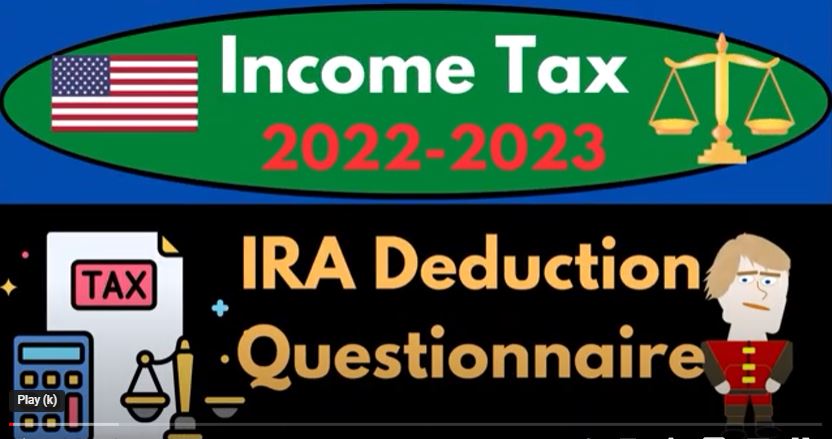The income tax years of 2020 to 2023 have brought about several changes and updates to the IRA deduction questionnaire. It is important to have a solid understanding of these changes, especially when it comes to tax preparation and wealth preservation. In this blog, we will be looking at a worksheet found on the form 1040 instructions on the IRS website to help us calculate the actual deduction.
First, it is important to understand the general scenario when it comes to the government’s concept of retirement savings. The idea is that everyone should be an employee of some kind and have access to a 401K type of plan. If you have access to a 401K plan, you should aim to max out your contributions to it in the taxable year of 2022. However, if you do not have access to a 401K plan, the IRA kicks in to provide retirement savings with some tax benefits.
It can become confusing when there is overlap between putting money into a 401K plan and an IRA, especially when your spouse has access to a 401K plan. However, generally, you can put money into an IRA up until the point that you file your tax return, not including extensions. This allows for some last-minute tax planning.
Now, let’s take a closer look at the worksheet on the form 1040 instructions. Box 1A asks if you were covered by a retirement plan. If you were a single filer, for example, you might have a W2 income, which means you were covered by a retirement plan. In this case, you will need to answer “yes.”
Moving on to box 1B, it asks if your spouse was covered by a retirement plan. If your spouse had access to a 401K plan or a similar retirement plan, you will need to answer “yes.”
Box 2 asks for your filing status. This could be single, married filing jointly, married filing separately, or qualifying widow(er).
Box 3 asks for your modified adjusted gross income (MAGI). This includes your income from all sources, including wages, salaries, tips, interest, and dividends. It also includes any retirement account distributions and rental income. You will need to subtract any deductions that you are eligible for, such as student loan interest or IRA contributions.
Box 4 asks for your IRA contributions. This includes any contributions you made to a traditional IRA, deductible or non-deductible, in the tax year.
Box 5 asks for any taxable amount of IRA distributions. This includes any distributions you received from a traditional IRA in the tax year.
Box 6 calculates your IRA deduction. This is the amount that you can deduct from your taxes based on your MAGI and IRA contributions.
It is important to note that there are income limits for deducting traditional IRA contributions if you or your spouse are covered by a retirement plan. These limits are subject to change each year and can be found on the IRS website.
In conclusion, understanding the IRA deduction worksheet can help you plan for retirement savings and tax benefits. It is important to consider your specific situation, including your filing status, retirement plan coverage, and income, when making contributions and deductions to your IRA.
To summarize, the rules for IRA contributions can be complex, especially for married individuals with access to employer-sponsored retirement plans. The maximum contribution limit for an IRA is $6,000 for individuals under 50 and $7,000 for those over 50. The contribution limit is also subject to income thresholds based on filing status and access to employer-sponsored plans.
Married individuals may have different contribution limits depending on whether their spouse has access to a retirement plan, and the income thresholds may also vary. It’s important to consult with a tax professional or use tax software to ensure that you are maximizing your IRA contributions while complying with IRS rules.

